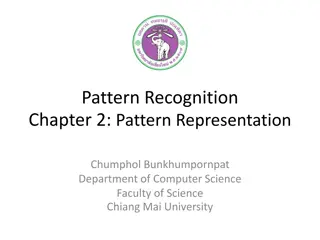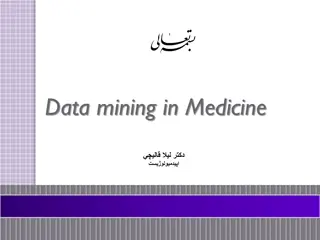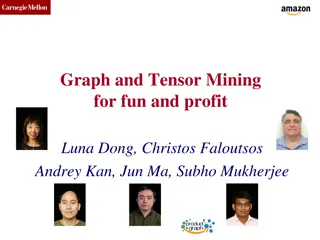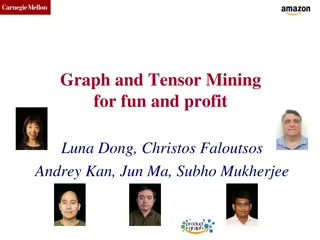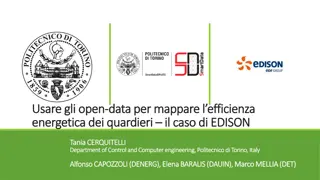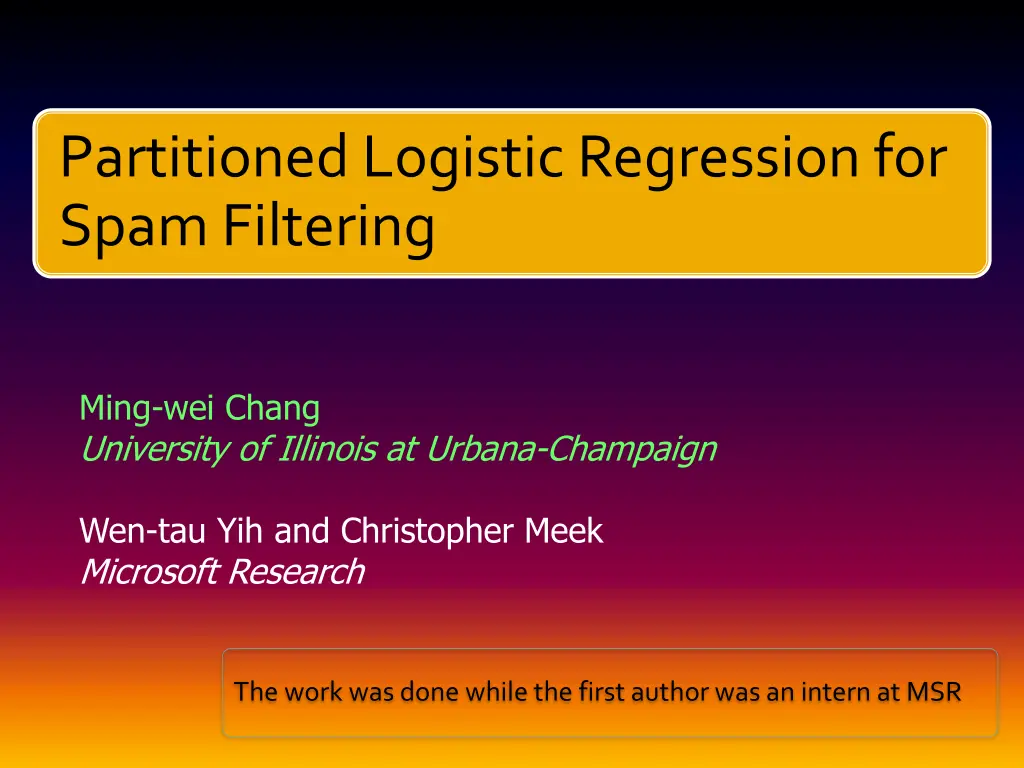
Optimizing Spam Filtering with Partitioned Logistic Regression
Discover how partitioned logistic regression (PLR) enhances spam filtering by combining the strengths of Naive Bayes and Logistic Regression models. By leveraging natural feature groups, PLR significantly boosts AUCfpr
Download Presentation

Please find below an Image/Link to download the presentation.
The content on the website is provided AS IS for your information and personal use only. It may not be sold, licensed, or shared on other websites without obtaining consent from the author. If you encounter any issues during the download, it is possible that the publisher has removed the file from their server.
You are allowed to download the files provided on this website for personal or commercial use, subject to the condition that they are used lawfully. All files are the property of their respective owners.
The content on the website is provided AS IS for your information and personal use only. It may not be sold, licensed, or shared on other websites without obtaining consent from the author.
E N D
Presentation Transcript
Partitioned Logistic Regression for Spam Filtering Ming-wei Chang University of Illinois at Urbana-Champaign Wen-tau Yih and Christopher Meek Microsoft Research The work was done while the first author was an intern at MSR
Linear classifiers are used in many applications Document classification, information extraction tasks, spam filtering Why? Good performance in high dimensional spaces Very Efficient Two popular algorithms Na ve Bayes(NB) and Logistic Regression (LR) NB: conditional independence assumption LR: can capture the dependence between features
We propose partitioned logistic regression (PLR) A new hybrid model of NBand LR A weaker conditional independence assumption Suitable for tasks with natural feature groups It works great on spam filtering! It improves the AUCfpr<=10%by 28.8%and 23.6% compared to NBand LR, respectively Easy to implement and use
Introduction The Model: Partitioned Logistic Regression Analysis of Partitioned Logistic Regression Application to Spam Filtering Conclusion
Feature Groups Key Assumption: each feature group is conditionally independent of each other given the label
Only one feature per group: Nave Bayes Only one feature group: Logistic Regression How to decide feature groups? Some applications have natural feature groups Spam Filtering: User, Sender, Content Document Classification: Title, Content Webpage Classification: Content and hyperlink
Prediction: Combine sub-models (NB Principle) Class Distribution Probability From LR
Introduction The Model: Partitioned Logistic Regression Analysis of Partitioned Logistic Regression Application to Spam Filtering Conclusion
Generative (NB) V.S. Discriminative (LR) Small number of labeled instances, NB can be etter ! [Ng and Jordan 2002] Asymptotic Error (with enough examples) Err(LR) Err(NB) Number of training examples required to converge #Example(NB) #Example(LR) Trade off between Approximation Error + Estimation Error NB might have a higher approximation error But might have a lower estimation error
Asymptotic Error (with enough examples) Err(LR ) Err(PLR) Err(NB) Number of training examples required to converge #Example(NB) #Example(PLR) #Example(LR) Therefore, which algorithm is preferred? Depends on the task and the amount of training data In practice, PLR often outperforms LR and NB If we have good feature groups
Draw artificial data from Gaussian distributions Control the co-variance of two feature groups When feature groups are conditionally independent, PLR is better than LR! When feature groups are not conditionally independent Small amount of labeled data, PLR is still better Large amount of labeled data, LR is better
Introduction The Model: Partitioned Logistic Regression Analysis of Partitioned Logistic Regression Application to Spam Filtering Conclusion
Spam filtering: just a text classification problem? NO! Relying on only email content is vulnerable [Lowd and Meek 2005] Need other types of information User information (Personalized Spam Filtering) Sender information (Reputation) Natural Feature Groups ! Adding all information into a single LR limited improvement (AUCfpr<=10% 0.512 (content)-> 0.521 (all)) Our Solution : Partitioned Logistic Regression Three feature groups: User, Sender and content
Algorithms: NB, LR, PLR All use the same features, labeled data The smoothing parameter is selected using development set Evaluation: ROC Curves Dataset Hotmail Feedback Loop (Content, Sender, Receiver) Train: July t0 Nov, 2005, Test: Dec 2005 TREC 05 & 06 (Content, Sender)
Product of Experts [Hinton 1999] Logarithmic opinion pool [Kahn et. al. 1998] [ Smith et. al. 2005] Alternative NB/LR mixture model Learn a LR on top of NB [Rania et al. 2004] Model Combination [Bennett 2006] The view of conditional independence assumption is novel Demonstrate the effectiveness of PLR in spam filtering
Machine learning perspective A novel mixture of discriminative and generative models Suitable for the applications with natural feature groups Spam Filtering PLR integrates various information sources nicely Significantly better than LR and NB Future Works Detecting good feature groups automatically Different methods of combining sub-models

